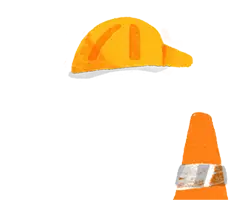Part 5Collective bargaining
Collective agreements
56AApplication of collective agreement to subsequent parties
An employer who is not a party to a collective agreement may become a party to the collective agreement if—
- the agreement provides for an employer to become a party to the agreement after it has been signed
by the original parties to the agreement; and
- the work of some or all of the employer's employees comes within the coverage clause in the
agreement; and
- the employees referred to in paragraph (b) are not bound by another collective agreement in respect
of their work for the employer; and
- the employer notifies all the parties to the agreement in accordance with subsection (5) that the
employer proposes to become a party to the agreement.
On the day after the day on which all parties to the collective agreement have been notified in accordance with subsection (5),—
- the employer becomes a party to the collective agreement; and
- the collective agreement also binds and is enforceable by—
- the employer:
- employees—
- who are employed by the employer; and
- who are or become members of a union that is a party to the agreement; and
- whose work comes within the coverage clause in the agreement.
- who are employed by the employer; and
- the employer:
A union that is not a party to a collective agreement may become a party to the collective agreement if—
- the agreement provides for a union to become a party to the agreement after it has been signed by
the original parties to the agreement; and
- the union has members doing work that comes within the coverage clause of the collective agreement;
and
- as a result of a secret ballot of those members, a majority of them who are entitled to vote and do
vote are in favour of the union becoming a party to the collective agreement; and
- the union notifies all the parties to the collective agreement in accordance with subsection (5)
that the union proposes to become a party to the agreement.
On the day after the day on which all parties to the collective agreement have been notified in accordance with subsection (5),—
- the union becomes a party to the collective agreement; and
- the collective agreement also binds and is enforceable by—
- the union:
- employees—
- who are employed by an employer that is a party to the agreement; and
- who are or become members of the union; and
- whose work comes within the coverage clause in the agreement.
- who are employed by an employer that is a party to the agreement; and
- the union:
For the purposes of this section, a party to a collective agreement is notified—
- when the notice is given to the party; or
- if the notice is posted to the party, on the seventh day after the day on which the notice is
posted.
For the purposes of subsection (1)(b) and (c), employees includes persons whom the employer might employ in the future.
Notes
- Section 56A: inserted, on , by section 17 of the Employment Relations Amendment Act (No 2) 2004 (2004 No 86).


